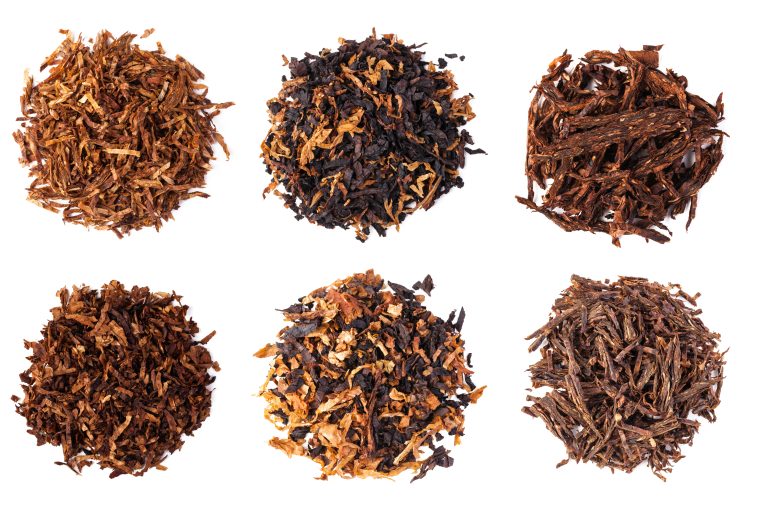As the gentle art of pipe smoking continues to enchant enthusiasts worldwide, choosing the right tobacco cannot be overstated. Just as a skilled chef selects the finest ingredients for a delectable dish, discerning pipe smokers must carefully consider the tobacco they load into their beloved pipe. Whether you’re a seasoned pipe smoker or a novice exploring the world of pipe tobacco, this guide will help you navigate the myriad factors in selecting the perfect tobacco for your pipe.
Make sure to also check out Choosing the Perfect Pipe: An In-depth Review.
Understanding the Basics of Pipe Smoking
Pipe smoking is an art that requires patience, presence, and a bit of knowledge. Unlike smoking cigarettes, which are often hurried affairs, pipe smoking encourages you to slow down and savor the experience. This leisurely pace allows you to appreciate the tobacco’s nuances and the soothing rhythm of drawing smoke from your pipe.
Exploring the World of Pipe Tobacco
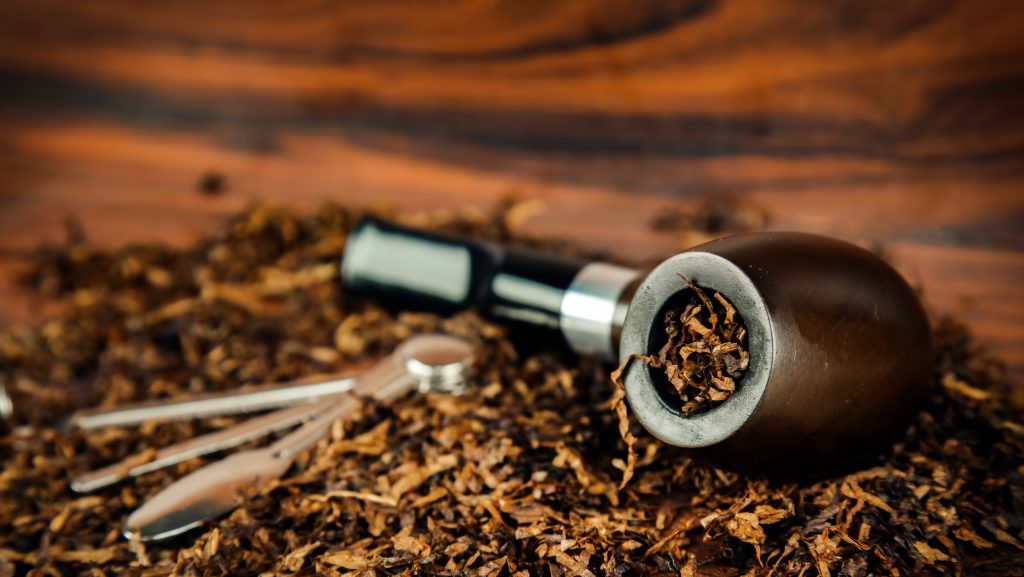
Smoking pipe tobacco opens up a world of possibilities, from the various tobacco leaf types to the different tobacco blends available. As a new pipe smoker, it’s essential to understand that pipe tobacco is typically divided into two main categories: aromatic and non-aromatic blends.
Aromatic Blends: Delighting the Senses
Aromatic blends provide pipe smokers with captivating scents and flavors. These blends are often infused with natural flavorings that create a delightful room note, pleasing the smoker and those around them. Aromatic blends can be an excellent starting point for beginners due to their approachable and crowd-pleasing aromas.
Aromatic options include but are not limited to chocolate, vanilla, cherry, coconut, walnut, bourbon, rum, and even strawberries.
Non-Aromatic Blends: Embracing the Natural
On the other end of the spectrum are non-aromatic blends, which offer a more authentic tobacco experience. These blends showcase the true character of tobacco leaves, highlighting their natural sweetness, nutty flavors, and earthy undertones. Non-aromatic combinations provide a more robust and unadulterated smoking experience for seasoned smokers.
Unraveling the Mystery of Tobacco Blends
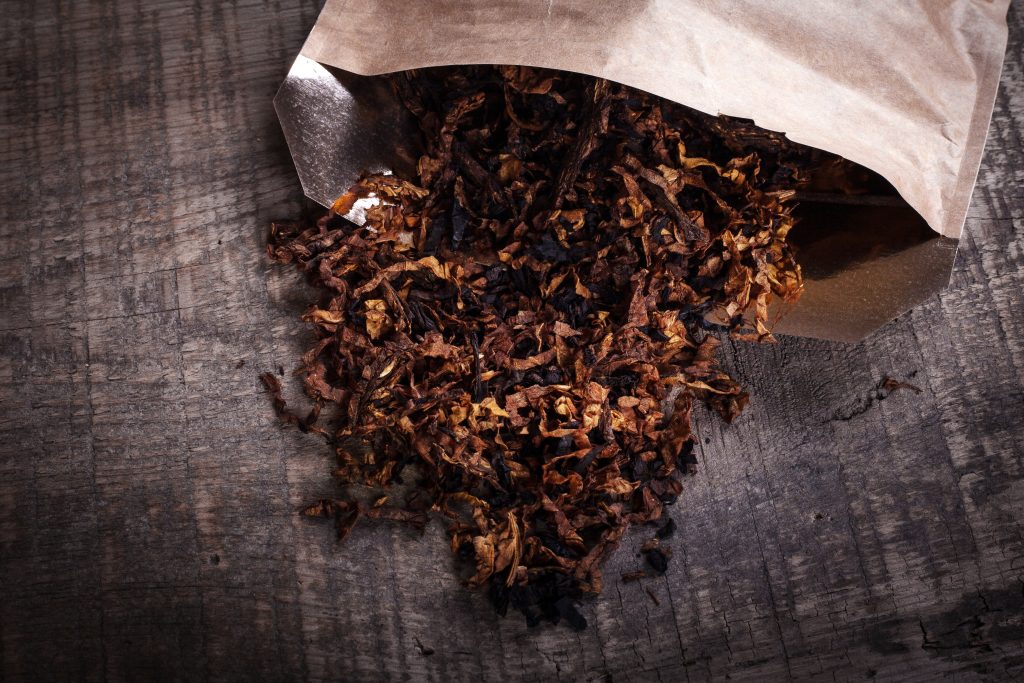
Tobacco blends result from skilled blenders combining different types of tobacco leaves to create a harmonious flavor profile. Some common types of “Western” or “European” tobacco include Burley, Cavendish, Dark Fired Kentucky, Virginia, and Perique, each with distinct qualities.
Oriental variants include two of the most common blends, Latakia and Balkan tobacco.
Burley Tobaccos
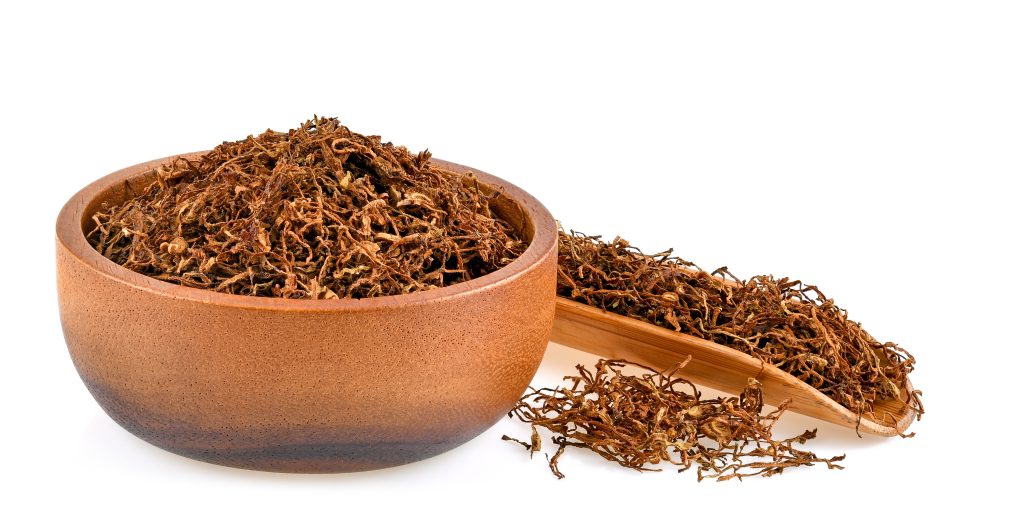
Unflavored Burley has a mild, nutty, chocolaty, slightly bitter taste – quite a unique combination, right? But here’s the twist: when it comes to burley pipe tobacco, blenders often add a touch of sweetness, so most pipe smokers experience Burley as flavored tobacco.
Burley takes the lead by a wide margin as the most commonly used leaf to craft pipe blends. In his work “The Pipe Smoker’s Tobacco Book,” Robert Winans notes that for many smokers, the mention of Burley instantly brings to mind pipe tobacco. In certain pipe mixtures, you might also encounter related types like dark air-cured and fire-cured Burley. However, most burley blends use air-cured leaves with genetics from white Burley.
The exciting part about Burley is that it’s almost devoid of natural sugars. But don’t be fooled – this sugar absence makes blenders happy. It’s like a blank canvas for them, ready to absorb and embrace various flavors. They even call Burley a “drinkable” tobacco because it quickly soaks up flavorings and sugary coatings. This quality makes Burley the perfect base for crafting flavored pipe tobaccos. And guess what? Blenders have complete control over the level of sweetness since they’re the ones adding in the sugars intentionally. It’s like a tobacconist’s playground of creativity!
Here are some of the properties of Burley tobacco:
- It is a light-colored tobacco with a mild flavor.
- It is high in nicotine and moisture.
- It is slow-burning and has a long shelf life.
- It is used in various tobacco products, including cigarettes, pipe, chewing, and snuff.
Burley tobacco is grown in various soil types but prefers well-drained, loamy soil. It is a relatively easy crop to grow but susceptible to pests and diseases. Burley tobacco is harvested in the fall when the leaves are fully mature. The leaves are then cured in barns, allowing them to dry slowly.
Burley tobacco is an essential crop for many countries. It is a significant source of income for farmers and provides jobs in the tobacco industry. Burley tobacco is also a popular tobacco product for smokers. It is known for its smooth flavor and long burn time.
Cavendish
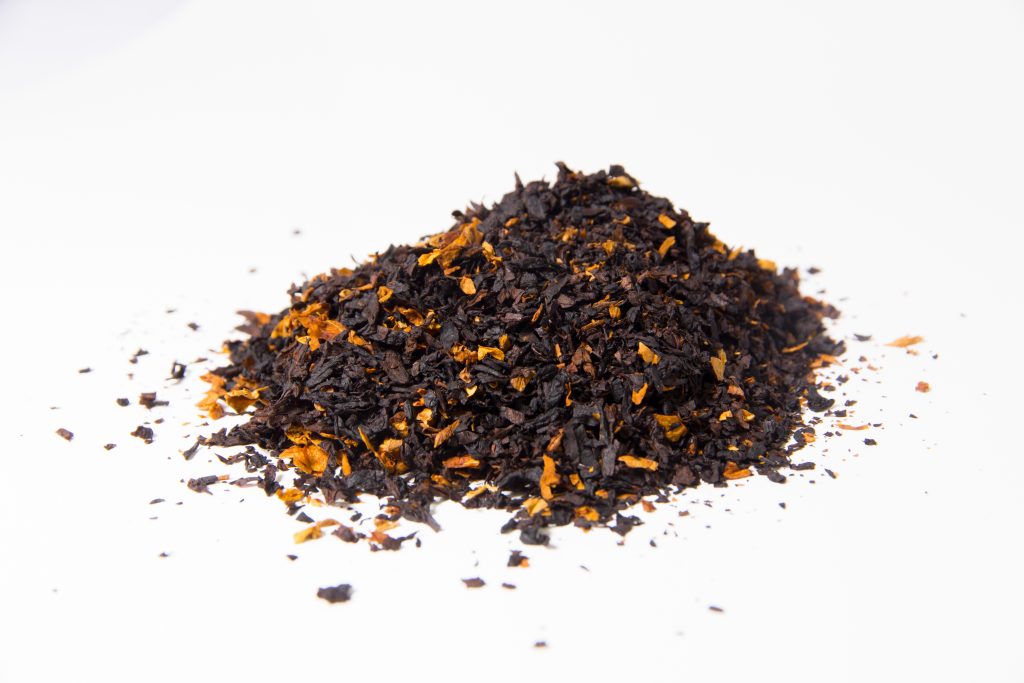
The term “Cavendish” originated in the late 16th century, when Admiral Sir Richard Grenville and Sir Thomas Cavendish paid a visit to the English Colony of Virginia at the request of the crown. During their stay, they were given tobacco as a gift. Sir Thomas Cavendish had a unique idea. He wanted to return this tobacco to England to sell and promote it. To ensure the tobacco didn’t dry out or add some sweetness, Cavendish infused it with dark rum (other sources suggest sugar) from his personal supply. He then rolled the leaves, tightly bound them with twine and canvas, and set sail.
After a few weeks at sea, the tobacco was sliced and smoked. To everyone’s surprise, including fellow sailors, the flavor had remarkably improved. The smoke was now milder, sweeter, and had a more pleasant aroma. It was quite a transformation!
It’s a Method, Not a Type
Despite its name, Cavendish is more a method of cutting and curing tobacco than a type. The method of cutting and processing allows the tobacco leaf’s naturally sweet taste to emerge. In a nutshell, the Cavendish process can work with almost any type of tobacco. Still, Virginia and Burley tobaccos are the most commonly used. However, some European-style Cavendishes might throw in a twist, like adding Oriental leaves or condimental tobacco such as Latakia or Perique, to give the blend a touch of spice.
To make Cavendish, blenders can follow flexible rules. Add some sugar to your preferred tobacco, and apply heat, steam, and pressure. Boom, you’ve got Cavendish!
Now, the magic happens when these tobaccos go through the Cavendish process. They get squeezed and heated, coaxing out the natural sugars from the tobacco. You can also flavor or sweeten them by dipping or spraying them with the desired flavoring. If it’s sweetened, it’s called sweetened Cavendish; if it’s only treated with pressure and heat, it’s unsweetened.
The longer you press these tobaccos, the more the flavors mingle and intensify. It’s like a flavor infusion!
One cool thing to note is that during Cavendishing, the original tobacco loses many of its natural flavors, making it an ideal canvas for absorbing other flavors from different tobaccos or external flavoring agents. This process smooths out the tobacco’s natural character, creating a consistent product that can be used as a base for adding other flavors or paired with more flavorful tobacco leaves. Often, the Cavendish method is also used to create aromatic tobaccos.
They reintroduce moisture to the leaf, making it about 14 percent heavier. Once that’s done, the tobacco is removed from the bulk barn and bundled up for transport and further processing.
Dark Fired Kentucky
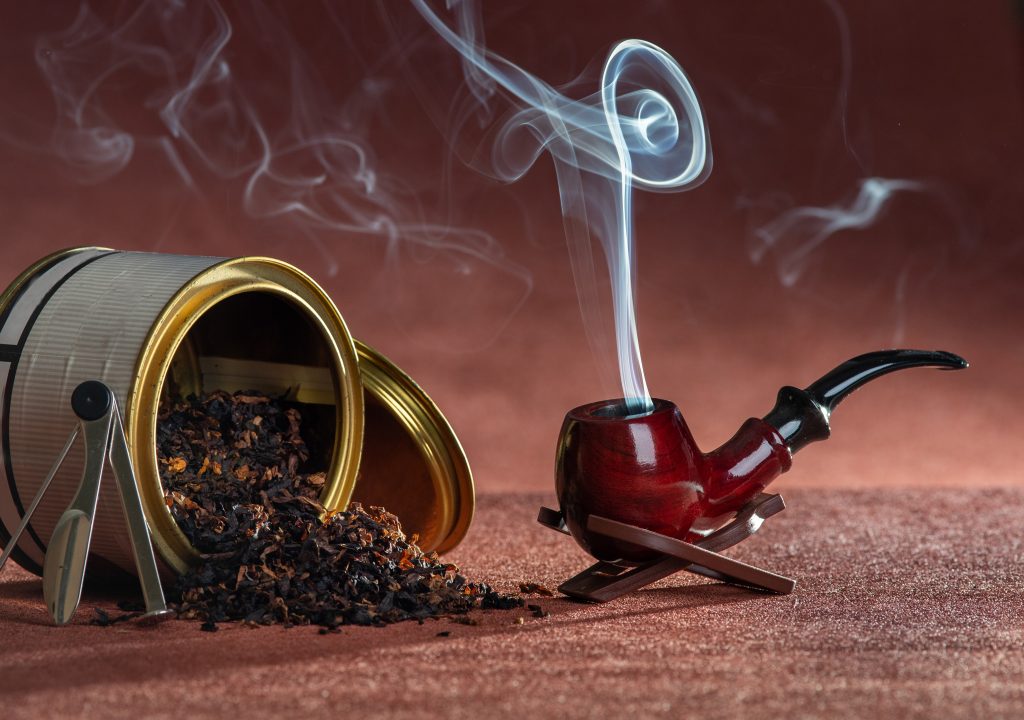
Let’s dive into Dark Fired Kentucky, or DFK for short. DFK starts similar to Burley, growing in the same regions. But here’s the cool part – DFK takes a different path. While Burley might be familiar to you, DFK sets itself apart by undergoing a unique curing process.
Imagine this: DFK is left to cure right over an open fire. And guess what? This fire is made with many of the same woods that barbeque pitmasters choose for different types of barbeque. So, in essence, DFK is getting a smoky treatment!
This unique and direct curing process gives DFK its incredibly smoky flavor. It’s a flavor similar to Perique but has a distinct character. During this fire-curing process, there’s a chemical change happening to the tobacco. It’s like a transformation, increasing the nicotine content of the final product.
When you experience DFK, you’ll notice some fantastic aspects. It’s got a very earthy essence, with hints of natural sweetness that add to the complexity. And even with all this flavor, it’s super smooth on the tongue, making for a delightful smoking experience.
Virginia Tobacco
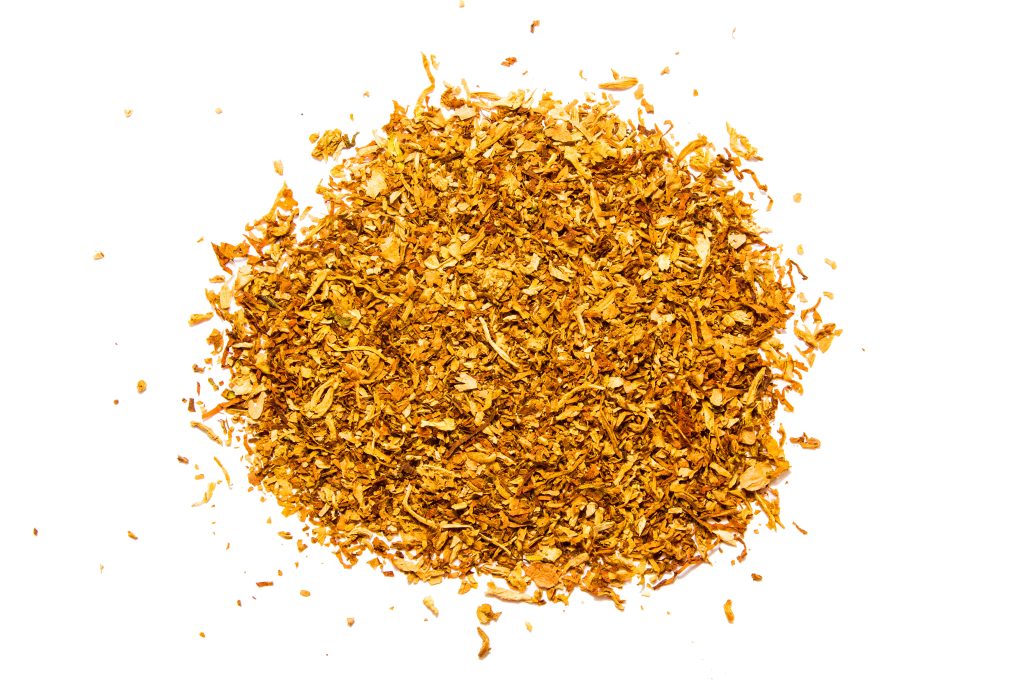
Known for its natural sweetness and bright flavors, Virginia tobacco is often the base for many blends. It’s a versatile leaf that can be enjoyed independently or mixed with other tobaccos.
One of the beloved choices among pipe smokers is Virginia leaf, also known as bright or brightleaf. This type of tobacco goes through a specific process called flue-curing. Picture this: the tobacco is rapidly dried in a specialized barn where clean air, heated by a furnace, does the job in about a week to 10 days.
Now, the reason it’s called Virginia tobacco is more historical than geographical. It doesn’t matter where it’s grown – the type of seed, the way the leaves are harvested (fully ripe, often yellowed), and the flue-curing process define Virginia tobacco. This curing process is vital because it helps lock in a high level of natural sugars in the cured product.
The different variations of Virginia tobacco – like red, stoved, aged, lemon, bright, or black – all start from the same place: flue-cured leaf. But the way they’re processed afterward gives them their unique characteristics. Imagine the modern curing barn, called a “bulk barn.” It’s not your typical barn; it resembles a big camper trailer without windows. This barn is filled to the brim with ripe leaves fresh from the fields.
How the Process Works
The temperature starts low, around 100 degrees Fahrenheit (37.7ºC), to avoid damaging the moist leaf. The temperature is gradually raised as the drying goes on, reaching about 165º F (73.9ºC) after around ten days. Air circulates to help draw the moisture out of the leaf. This speedy drying process is vital because it stops the leaf’s natural processes in their tracks. It preserves those precious natural sugars before they can break down. So, flue-curing is the secret to creating genuinely sweet Virginia pipe tobacco. (Just so you know, in today’s commercial markets, air-dried Virginia and flue-cured Burley don’t exist.)
The leaf transforms into a lovely gold or lemon color at the end of this curing journey. It’s super dry and fragile, practically shattering to the touch. To bring ba
Perique
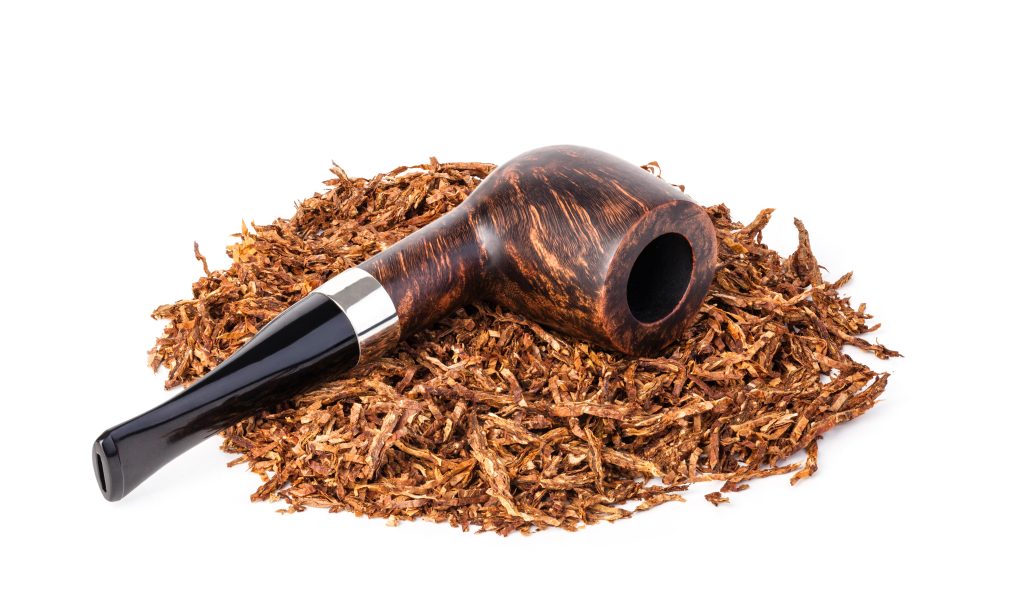
Perique is a unique and rare tobacco characterized by its peppery and fruity notes. It’s usually used in small amounts to add complexity to blends. This unique tobacco is exclusively crafted in St. James Parish, Louisiana. Perique doesn’t just happen overnight – it goes through a special journey. It starts as air-cured tobacco, but then it gets a one-of-a-kind treatment for around 12 to 18 months.
Perique Process
First, the air-cured tobacco leaves are carefully packed into large oak whiskey barrels. These barrels are sealed and subjected to pressure, which kicks off a unique anaerobic fermentation. During this fermentation process, which happens at least three times, the tobacco is taken out of the barrels, the leaves are separated and aired out, and then they’re packed back in for more months of pressure treatment.
This whole process works its magic and transforms the flavor of the tobacco in a big way. Perique becomes richly flavored and incredibly distinct. You won’t usually find folks smoking it all by itself. It’s like a flavor enhancer, a condiment leaf. It’s added in small amounts – typically just a few percent by weight – to blends that use Perique. And when added, it brings a hint of spiciness, like the zing of figs and pepper. You might even pick up on fermented plum, olive, and pine notes. It’s a real flavor adventure!
But here’s the kicker – Perique finds its perfect partner in blends with Virginia tobacco. They’re like the dynamic duo of the tobacco world, creating a symphony of flavors that pipe enthusiasts adore.
Oriental Tobaccos
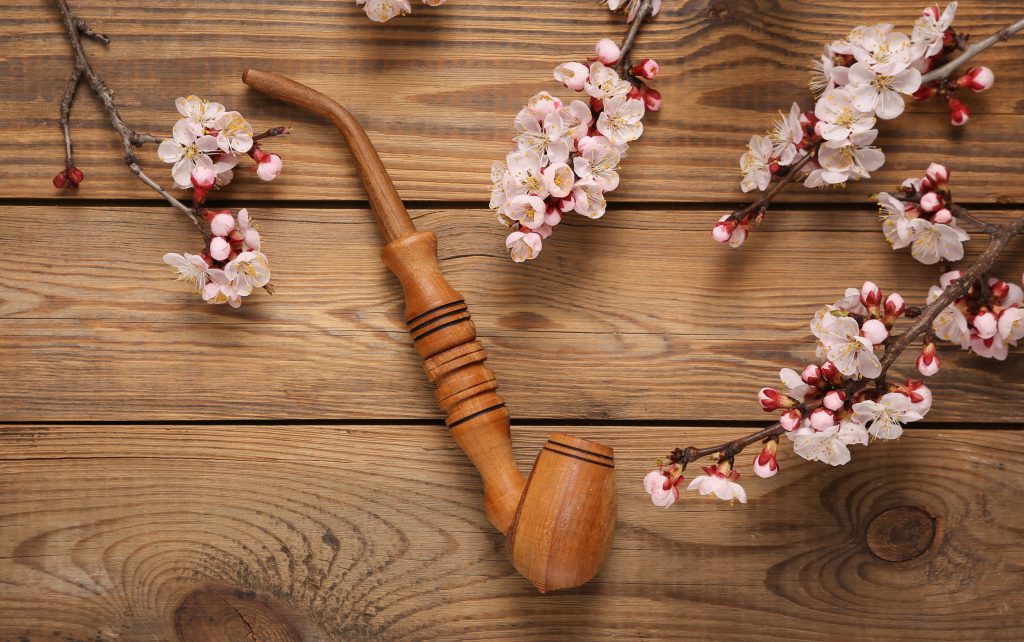
Oriental tobaccos have a unique origin – from the northern Mediterranean regions, places like Greece, Turkey, Cyprus, Syria, and the Balkans.
Oriental tobacco leaves are on the small side and usually get the flavor from soaking up the sun during curing. Their natural aroma makes them stand out, which comes from all these special oils and waxes they hold. When you light up Oriental tobacco, get ready for a delightful experience. You might notice a savory spice or a mix of sweet and sour flavors that make them something special.
Latakia
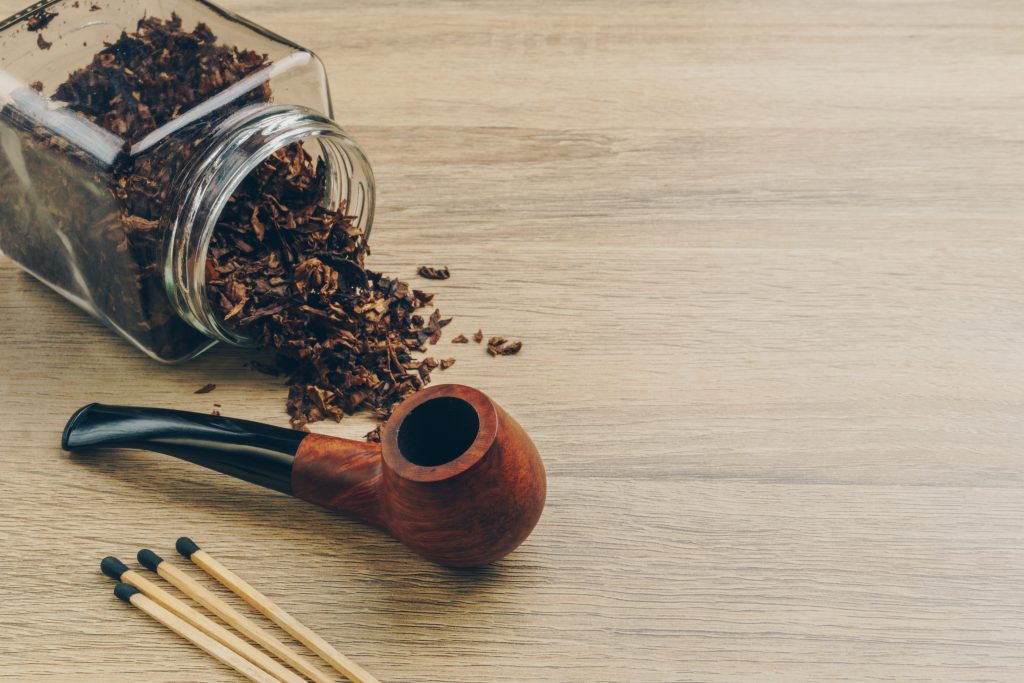
Latakia is truly fascinating tobacco. Initially, it hailed from Syria and was named after the port city of Latakia. However, these days, it’s mainly produced in Cyprus. Latakia gets its unique character from being cured over a fire fueled by stone pine or oak wood. This gives it a seriously intense smoky-peppery taste and aroma. But here’s the thing – it’s a bit too robust to smoke on its own. Instead, it’s like a seasoning, a “condiment,” often added to specific blends, especially in classic English and some American blends.
Let’s clear up a misconception and pervading myth. The only thing smoldering in Latakia is the fire. Latakia is not flavored by smoldering camel dung. The real deal involves various herbs and hardwoods in the processing of Latakia. So, no need to worry about any unexpected surprises in your tobacco!
Balkan
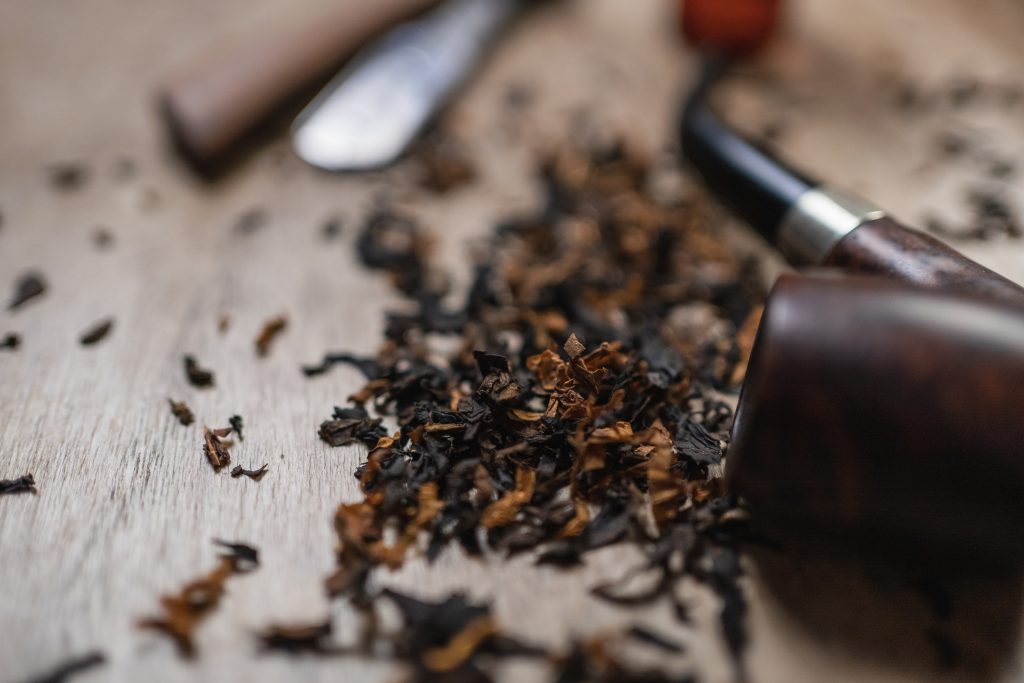
Let’s delve into the world of pipe tobacco blends and understand the differences between “English,” “Scottish,” and “Balkan” styles. There’s some debate about distinguishing these blends, but I’ll explain it.
So, here’s the deal: every Balkan blend is English, but only some English blend is Balkan. To get more specific, a mix becomes more “Balkan” as it adds more Oriental leaves from the Balkan region. It’s like a spectrum – more Oriental leaf, more Balkan vibe. Many newcomers to pipe smoking find that both English and Balkan blends are kinder to their tongues than flavored burley aromatics or sugary Virginias. And when someone new to the pipe world feels a bit disheartened, a tobacconist might introduce them to a gentle English or Balkan blend to rekindle their interest.
Now, let’s tackle the question of what these styles mean:
The key players for “English” blends are Latakia, Virginia, and Oriental tobaccos. Latakia takes center stage, Virginia provides a solid backdrop, and Orientals add a spicy kick.
“Scottish” blends are like cousins to English blends. They still have Latakia but in smaller amounts. Virginia tobacco takes a more dominant role, and you might even find little to no Oriental leaf in the mix.
Regarding “Balkan” blends, things take a different turn. These blends are primarily built around Oriental tobaccos and Latakia. A hint of Virginia tobacco is added to maintain structure and balance. Still, the show’s stars are the Orientals and Latakia.
So there you have it – a guide to understanding the flavorful world of “English,” “Scottish,” and “Balkan-style” blends!
The Art of Selecting the Right Tobacco Blend
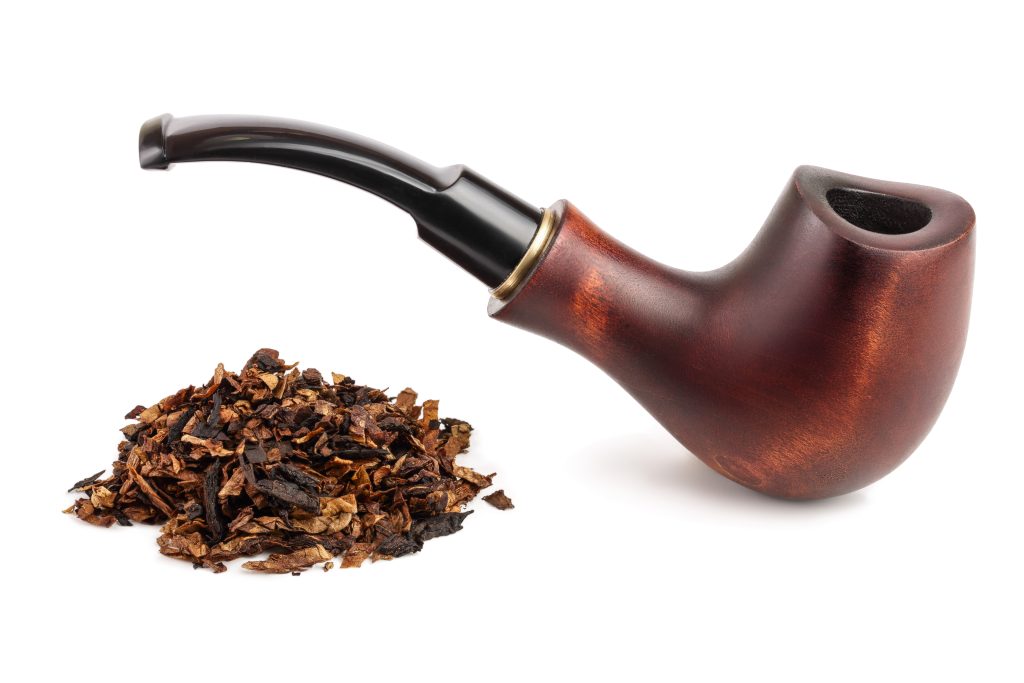
When choosing a tobacco blend, consider your preferences, the occasion, and the setting where you’ll enjoy your pipe. If you’re a new smoker, it’s advisable to start with milder blends to ease into the smoking experience. For seasoned smokers, experimenting with different mixes can be an exciting way to discover new dimensions of taste and aroma.
Factors to Consider When Smoking Pipe Tobacco
1. Flavor Profile: The flavor profile of a tobacco blend is a combination of its ingredients. Cavendish and Virginia tobaccos might be your go-to if you’re drawn to sweeter notes. For a bolder experience, blends incorporating Burley or Perique could be more appealing.
Smoking Latakia and mild English blends are excellent options for “beginner pipe tobacco” because of their mild profiles, and they have less tongue burn when compared to Virginia or Burley tobaccos.
2. Tobacco Cuts: How tobacco is cut affects how it burns and feels in the pipe. Ribbon-cut tobacco is a common choice, but cube-cut and crumble-cake options offer distinct burning characteristics.
3. Moisture Levels: Proper moisture content is crucial for an enjoyable smoking experience. Too moist tobacco can be challenging to light and keep lit, while overly dry tobacco can result in harsh, hot smoke.
4. Burn Rate: Consider the burn rate of the tobacco blend. Some tobaccos burn quickly, while others have a slower burn. This factor affects how often you need to relight your pipe.
5. Room Note: If you’re mindful of the aroma your pipe leaves in the room, choose aromatic blends with pleasant room notes. Non-aromatic blends tend to have a more subdued scent.
Pairing Your Tobacco with the Right Pipe
Just as the correct wine enhances the flavors of a meal, the suitable pipe enhances the smoking experience. Different pipe shapes and materials can influence your smoke’s taste, feel, and overall satisfaction. Briarwood pipes are popular due to their natural heat resistance and neutral flavor. Dedicating specific pipes to specific types of tobacco is recommended to prevent flavor mingling.
Check out our guide on
Perfecting Your Pipe Smoking Technique
It would be best if you smoked your pipe correctly to get the most satisfaction from your tobacco blend. Puffing slowly and evenly helps maintain a cool burn and prevents tongue bite, a discomfort caused by excessive heat. Tamp the tobacco gently between puffs to ensure an even burn and a consistent smoking experience.
Storing Your Tobacco for Longevity
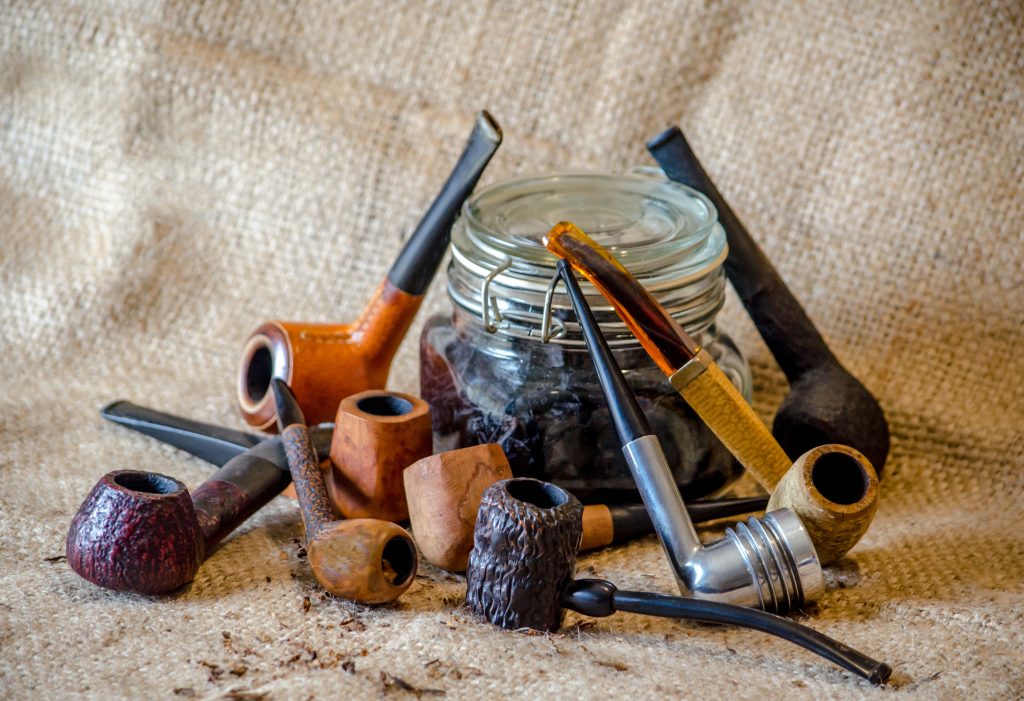
Proper storage is crucial to preserve the freshness and flavor of your pipe tobacco. Mason jars are excellent containers for keeping tobacco away from excess moisture and air. Take out only what you need immediately and keep the rest sealed to maintain optimal moisture levels.
The Journey of a Pipe Smoker
Becoming a true lover of pipe smoking is a journey filled with delightful discoveries and refined preferences. With each bowl, you’ll learn more about the interplay of flavors, the nuances of different blends, and the joys of contemplative relaxation.
Conclusion
Selecting the right tobacco is a deeply personal endeavor that requires consideration of factors ranging from flavor preferences to tobacco cuts. Whether you’re a seasoned pipe smoker seeking new delights or new to pipe smoking, taking the first steps on this aromatic journey, and understanding the art of tobacco selection, can elevate your smoking experience from ordinary to extraordinary. Remember, the perfect pipe tobacco is the one that resonates with your senses and offers you a satisfying smoke every time you indulge in this time-honored tradition.

